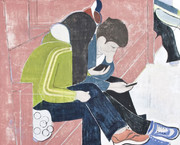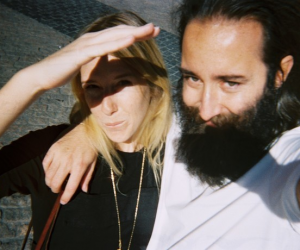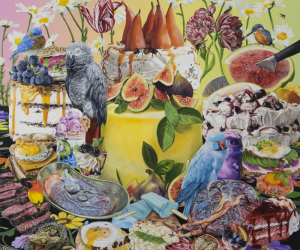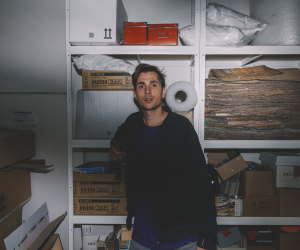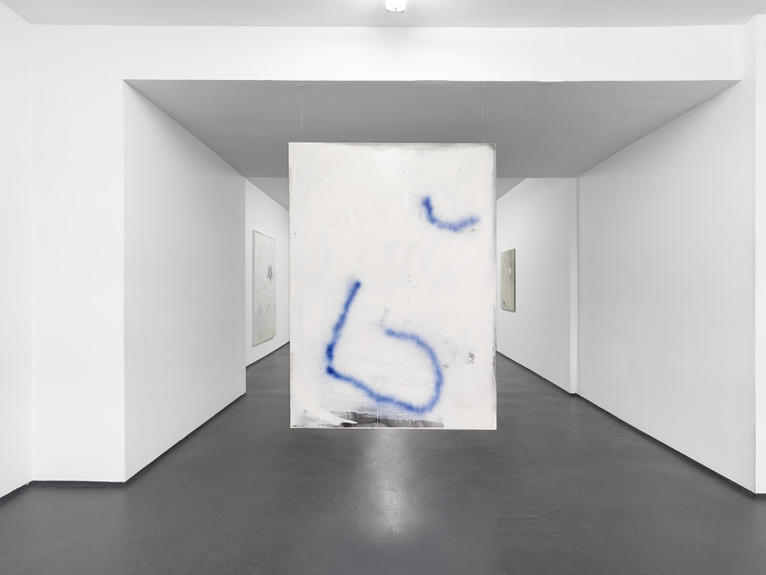
David Ostrowski – Dann lieber nein
Posted by Fabio 24 May 2012
The single elements within the works of David Ostrowski are supposed to look like traces which occur incidentally. On that account, he tries to neglect all of his painterly knowledge and ability in order “to paint as a right-hander with his right hand as if it was the left one.” Cryptical shapes arise out of this state of vagueness, which appear like failed attempts on a carelessly discarded notepad. But it’s exactely those random gestures that Ostrowski is interested in.
Meanwhile, his creative process is as uncontrolled as possible and permeated by the idea of a permanent change. Canvases are beeing dissected, glued together, disrupted again, repainted, put aside, pulled over the floor, fragmentary findings from his studio like paper, cardboard, wood or adhesive foil are being added, then they get painted over and cut again. This course of action is not subject to any chronology or strategy. It is rather a repertoire of scopes for design which do not allow any final examination of the result, which is to be obtained. Ostrowski, in fact, aims for keeping his own power of decision out of the concrete artistical action. He concentrates on the choice of technique , on the acceptance or rejection of a randomly originated form. In a quite slow process, he repeatedly modulates the different picture elements until the assemblage of the created coincidences results in a beautiful picture.
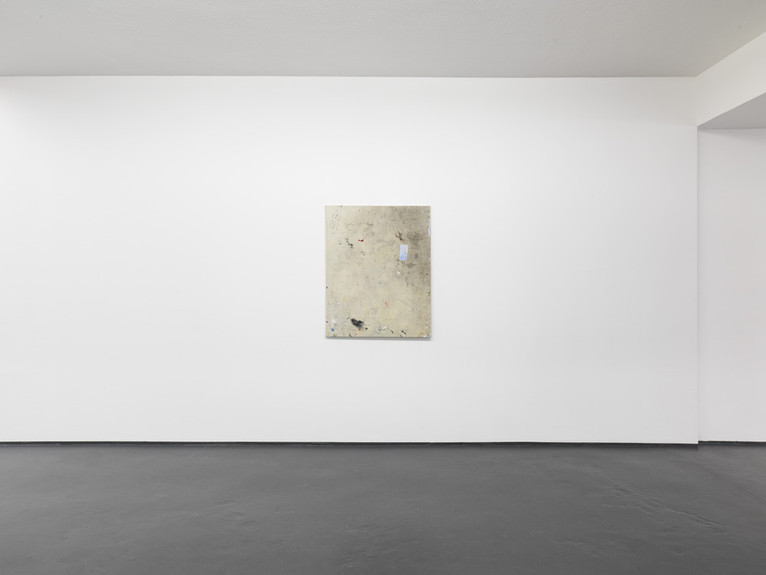
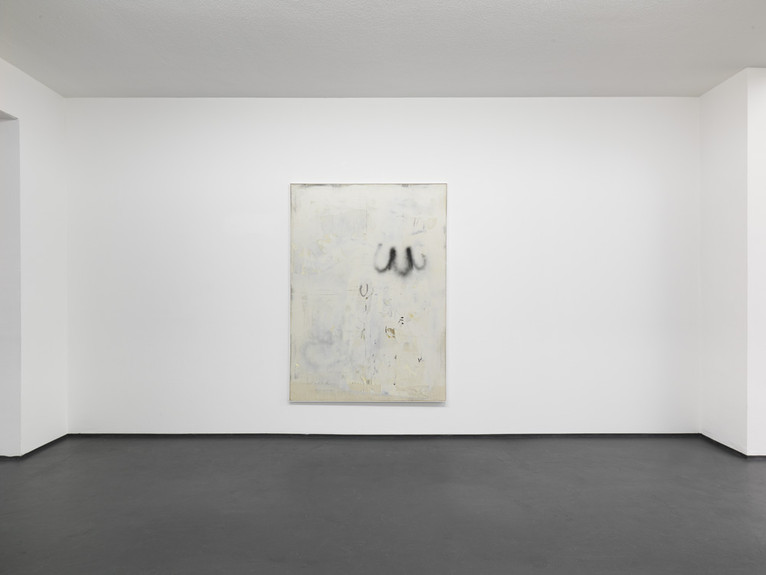 One criterion for this subjective definition of a completed painting is, e.g. how the different compiled elements work within their new context. The edges of the painting also play a decisive role. They are traced in many works in order to enclose the shapes that are floating within the image space and to isolate them from the exterior. Ostrowski takes the interaction between the picture elements and the exterior even further in this exhibition. Immediately after after entering th gallery, the visitor is faced with the painting Even the most beautiful woman ends at her feet, which is not installed on the wall as usual, it is attached to invisible threads and hangs freely in the space and thus, the work is subject to an absent background. The effects on the painting are immense. The airiness of the installation has a contrary effect on the picture elements, which suddenly seem constrained in front of the visual density of the free space.
One criterion for this subjective definition of a completed painting is, e.g. how the different compiled elements work within their new context. The edges of the painting also play a decisive role. They are traced in many works in order to enclose the shapes that are floating within the image space and to isolate them from the exterior. Ostrowski takes the interaction between the picture elements and the exterior even further in this exhibition. Immediately after after entering th gallery, the visitor is faced with the painting Even the most beautiful woman ends at her feet, which is not installed on the wall as usual, it is attached to invisible threads and hangs freely in the space and thus, the work is subject to an absent background. The effects on the painting are immense. The airiness of the installation has a contrary effect on the picture elements, which suddenly seem constrained in front of the visual density of the free space.
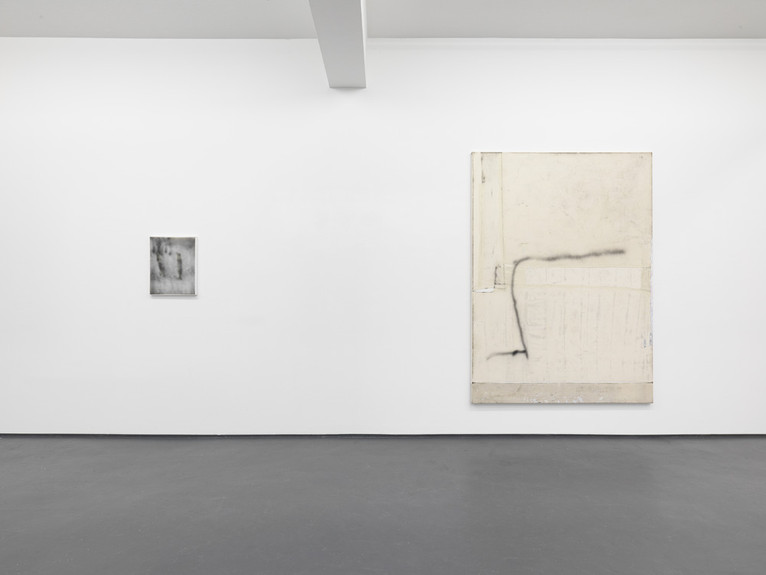
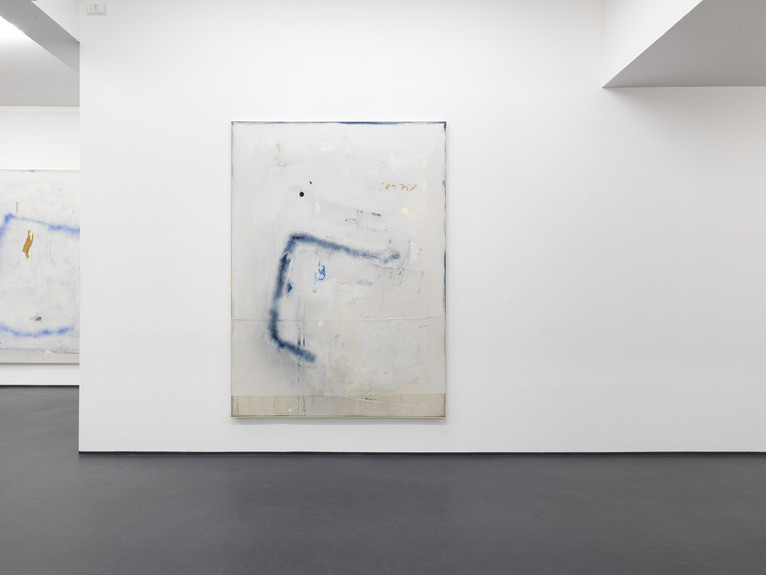 David Ostrowski was born in 1981 in Cologne. From 2004-2009 he studied painting with Prof. Albert Oehlen at the Düsseldorf Art Academy. In 2012 he received a studio grant from the Cologne Kunstverein.
David Ostrowski was born in 1981 in Cologne. From 2004-2009 he studied painting with Prof. Albert Oehlen at the Düsseldorf Art Academy. In 2012 he received a studio grant from the Cologne Kunstverein.
David Ostrowski
Dann lieber nein
Figge von Rosen Galerie, Cologne
April 19 to June 16, 2012



